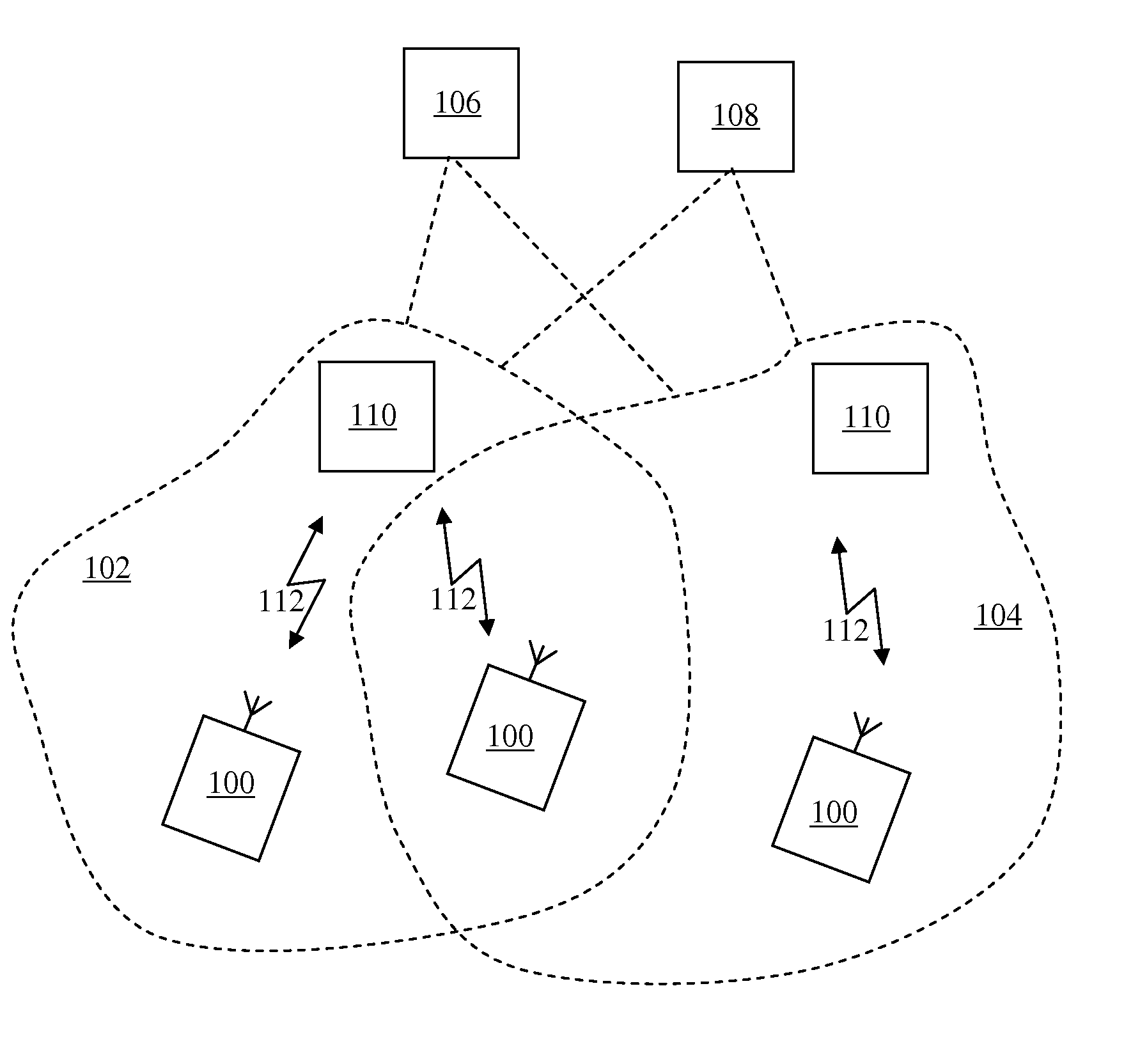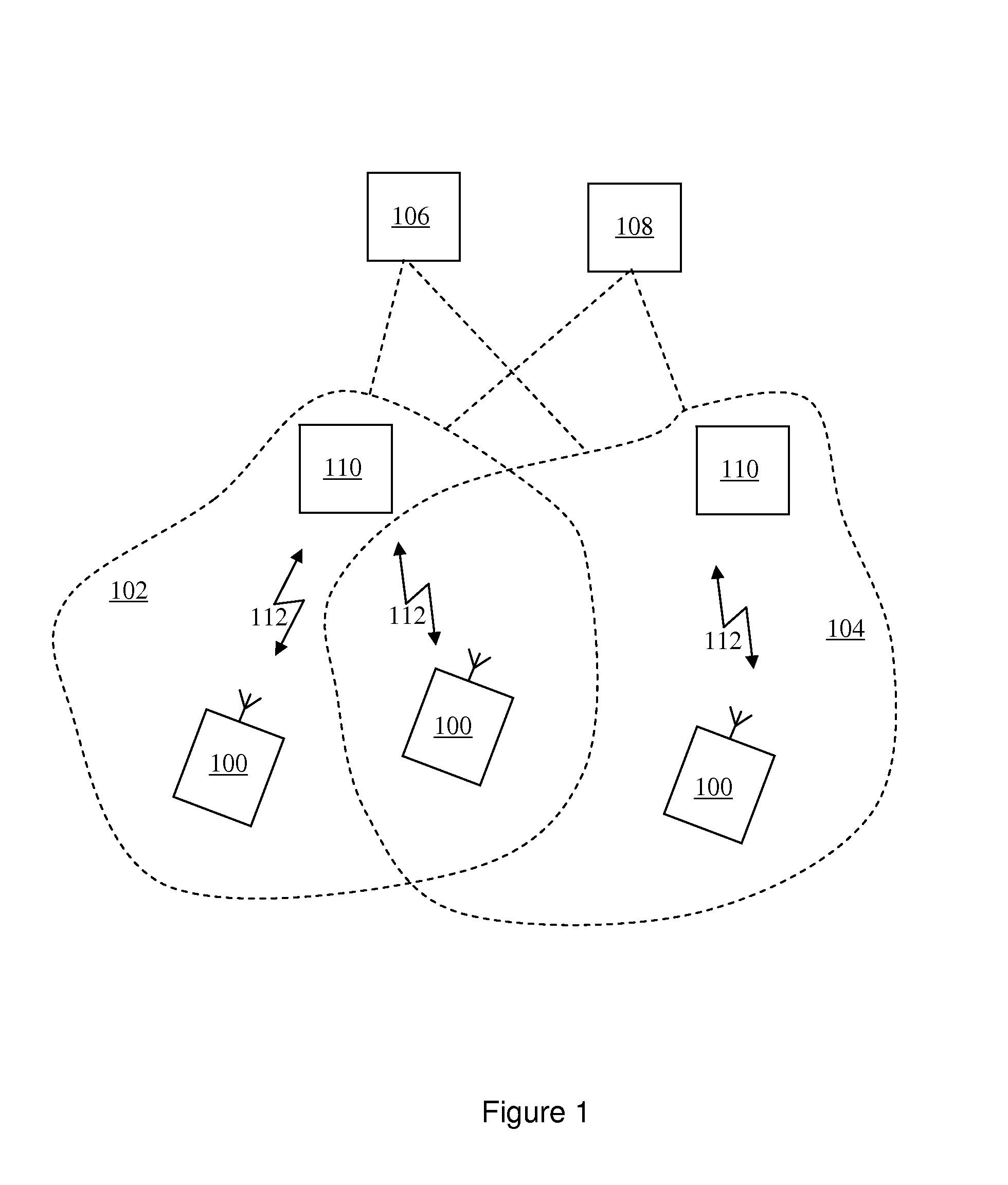Data communications
a data communication and data technology, applied in the field of data communication, can solve the problems of reducing the battery life of radio interfaces, such as wifi radio interfaces, consuming a lot of power, and so as to simplify hardware and/or software specifications. , the effect of reducing the cost and complexity of mobile nodes
- Summary
- Abstract
- Description
- Claims
- Application Information
AI Technical Summary
Benefits of technology
Problems solved by technology
Method used
Image
Examples
Embodiment Construction
[0054]A general system architecture for elements forming a data communications network according to an embodiment of the present invention is illustrated in FIG. 1. The exemplary network includes a first access network 102 and a second access network 104, each connected to a common core network beyond. The common core network may for example be the internet. In each access network, 102, 104, network access is provided via a different radio access node 110 across wireless radio links 112.
[0055]In FIG. 1 a network entity 106, for example a home agent HA, is arranged in the common core network to execute a network layer protocol stack for providing mobile internet protocol support to a set of mobile nodes MN 100. A communications link via which the protocol is provided utilises an internet protocol which is supported over a selected communications channel which may be effected via a number of mobile communications access networks. An application server AS 108 is arranged in the common ...
PUM
 Login to View More
Login to View More Abstract
Description
Claims
Application Information
 Login to View More
Login to View More - R&D
- Intellectual Property
- Life Sciences
- Materials
- Tech Scout
- Unparalleled Data Quality
- Higher Quality Content
- 60% Fewer Hallucinations
Browse by: Latest US Patents, China's latest patents, Technical Efficacy Thesaurus, Application Domain, Technology Topic, Popular Technical Reports.
© 2025 PatSnap. All rights reserved.Legal|Privacy policy|Modern Slavery Act Transparency Statement|Sitemap|About US| Contact US: help@patsnap.com



